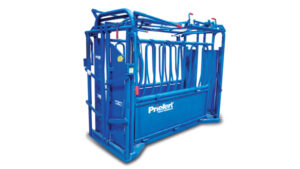Unilever’s Challenge
This was exactly the case at Unilever, a top ranked consumer goods company that manages hundreds of brands, thousands of SKUs globally and brings in over €50B in annual revenue. Last year, Unilever was ranked the #1 Supply Chain company by Gartner. Despite their achievements, their use of the full SAP suite (APO/SNP/SCM) and many other Supply Chain tools, they still were unable to answer the question that plagues so many manufacturing companies:
“Given latest demand and considering all my capacity, throughput, labor and inventory pre-build constraints, as well as their impact on fixed and variable costs, what is the optimal production line for a given SKU per month?”
They needed a technology and a process that balanced factory capabilities, capacity, and costs for a dynamic volume allocation at the lowest total network cost.
Unilever’s Technology Solution
Enter: River Logic, offering a Gartner-ranked prescriptive analytics solution. Prescriptive analytics is a category of advanced analytics solutions that provide the best solution possible answer to a range of business decision-making problems, simultaneously taking into consideration an unlimited number of business constraints in order to best meet the objectives specified. River Logic simplified the problem by shining light on the most relevant inputs and outputs through a revolutionary scenario management user experience that leverages PowerBI for highly detailed scenario analysis and visualization. By conducting rapid what-if scenarios in seconds, analysts who previously took weeks to find a solution were able to do so in only a few hours. Not only that, they finally had the best possible insights to make optimized decisions that drove unmatched value for the organization.
Using River Logic’s code-free Visual Modeler, an optimization model was created for the Spreads Division of Unilever BCS that included the following:
- Procurement (raw materials and packaging costs)
- Inbound logistics (costs, parameters, bills of material conversions, scrap factor)
- Manufacturing (labor costs, labor switch as fixed vs variable, resource calendar, product routing, run rates and efficiencies, production costs, fixed and variable costs, and MOQ)
- Outbound logistics (transport networks and transport costs)
- MSOs (demand in tons by SKU, by customer, and by market)
- Full financial information from each of the factories and each sales entity.
One way to think of the scale of this problem is that it is equivalent to 1 million equations with approximately 1 million variables in each equation, including detailed information for every factory, dozens of production lines, thousands of raw material items, dozens of markets, thousands of BOM combinations, fixed/variable costs and more.
Value Realization
Once the model was built, BCS business users were able to leverage River Logic’s Microsoft Azure-based scenario analysis solution to create and analyze unlimited scenarios, import bulk data, and adjust/review input parameters on an ongoing basis.
BCS was able to move from once-a-year business planning to a rolling 12-month business planning process — meaning they went from planning only once per year to 12 times per year. Before River Logic, their planning time was a few months. After River Logic, it went down to 1-2 days. This drastic improvement in efficiency in turn helped improve the reaction time and quality of decisions when the organization was faced with demand and cost volatility for that period. They were able to improve tactical decision making when unplanned events occurred, such as shortages of raw & pack materials or unpredictable swings in foreign exchange rates. Furthermore, their strategic planning also improved by being able to guide contract negotiations on procurement, labor, co-pack, transport, Brexit etc. In addition to the drastic improvements in the quality of decisions, efficiency and decision-making agility, BCS saw a radical initial savings in cost of goods.
River Logic & PowerBI Embedded: A Winning Pair
Power BI played a major role in both the success of the sale and the success of the application itself. Compared to Tableau, Qlik etc., — which are just BI tools — River Logic chose Power BI because of its much broader footprint including data blending, predictive analytics (R integration), and query generation (Power Query).
From a business perspective, embedding Power BI within the River Logic application means that business users — the people creating and analyzing scenarios — don’t have to jump back and forth between multiple applications (PowerBI and River Logic) in order to get those detailed drill-downs required to understand the “why” and the “how” behind optimization-based scenario runs.
PowerBI also allowed a few hundred analysts to the do the work of a few thousand analysts, enabling Unilever to save weeks of analyst work and reinvest that energy elsewhere. Users are able to seamlessly execute their workflows within a single application, and take advantage of the many innovative features that PowerBI has to offer.
Beyond PowerBI, the fact that River Logic decided to build its solution on Microsoft Azure has furthered River Logic’s competitive differentiation and revenue growth. Unilever BCS is just one example of dozens of solutions that have and can be developed using River Logic in combination with Microsoft Azure. Azure and PowerBI have enabled River Logic to create optimization-based prescriptive analytics solutions that address a near-unlimited number of planning and decision support challenges. These solutions span dozens of industries, like Mining, Oil & Gas, Utilities, Consumer Goods, Healthcare, Government, Chemicals and more.
The Power of Microsoft Azure
By basing its product roadmap on a cloud platform, River Logic is able to utilize Azure’s platform as service (Service Fabric) and infrastructure as a service (IaaS) to meet our goals of bringing together new, cloud-based application experiences within existing products. Azure offers the ‘base building blocks’ that allow its engineers to rapidly compose our application experience, together with the tooling and environments to be highly productive.
Microsoft Azure provided the ‘base building blocks’, tools, and environments River Logic’s engineering team needed, while also providing background infrastructure management and crucial connections to dev-ops. This removed much of the ancillary work from River Logic’s team and allowed them to focus on the key application aspects.
Further, to meet and exceed customer experience goals, River logic took advantage of the integrated environment (SDK) for developing, testing, and deploying cloud applications. SDK reduced the cost for code integration. Using the continuous delivery and deployment approach supported by Azure meant that River Logic’s monthly release of new features and functions could be 100% focused on the customer experience. In addition to Azure’s Security Development Lifecycle (SDL) that allowed River Logic to meet Unilever BCS’s stringent security requirements, Azure provided the ability for River Logic to scale quickly and reliably from a few (10) to thousands of users. This scaling is an essential piece when enabling the ability to run rapid and unlimited what-if analyses in very little time.
In today’s highly competitive global environment, firms such as Unilever need not only to extract the most value from their resources, but also to provide their oftentimes scarce talent with the necessary technologies to maximize impact while minimizing manual work. By leveraging dozens of features and services available in Microsoft Azure’s Platform-as-as-Service, River Logic has brought to life the ability for companies like Unilever to do just that.
Companies are able to empower employees with optimization-based prescriptive analytics, thus ensuring that every decision made is not only data-backed, but also directly aligned with company objectives. With the simplicity of PowerBI reporting at their fingertips, even top-level executives who might not even be familiar with prescriptive analytics can have visibility into the process of ensuring the best path forward.

(Please note: the client did not want to publicize the specific quantitative savings that were realized. However, the decrease in planning cycle time and the quantitative COGS savings can be verified verbally or via email by the client, providing that information is not published.)






